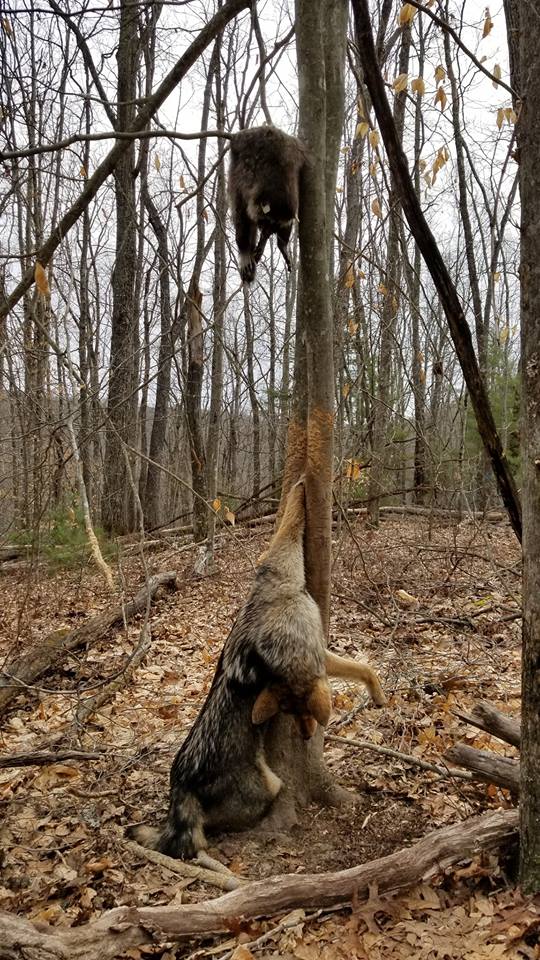Just two days ago, I posted the column “We built the cities, but we don’t necessarily rule them”, which discusses the thickly-settled presence of raccoons in North America’s thickly-settled cities. The proverbial ink wasn’t even dry on that column before media headlines buzzed over “zombie raccoons” in a Chicago suburb.
City officials in the Riverside neighborhood of Chicago have announced warnings of distemper outbreak in the area’s raccoon population - and the hazards posed to residents, as well as non-vaccinated pets.
I can’t say I’m totally shocked, given my recent reports on distemper outbreak here in New England - including the announcement of a newly-discovered strain of Canine Distemper Virus (CVD) potentially plaguing fur bearing species in the region.
I also can’t say I’m shocked given that the city of Chicago has its own “disease task force” covering the area, known as the Cook County Animal and Rabies Control.
According to the government website, The Cook County Animal and Rabies Control was established in 1954 during a state-wide rabies virus epidemic. (So much for the stereotypical dog catchers with the big nets!) Cook County is the second-most populous county in the U.S. after LA County, California, and encompasses the city of Chicago - the third-most populous city in the United States.
Cook County Animal and Rabies control issued their own statement regarding distemper issues in the area back in December of 2018.
Riverside Police began fielding increased calls of raccoons acting strangely in the Chicago neighborhood, prompting this week’s public warning about the distemper virus.
Stickney Township Animal Control, another suburb in Cook County, issued a similar statement on social media last month warning residents of distemper infected raccoons in their neighborhood.
Officials state that infected raccoons can transmit the disease if they bite dogs; which can cause respiratory and gastrointestinal problems, and impact the nervous system. The virus can be lethal in pets - and is fatal to the wild animals that contract the disease.
Wildlife, such as raccoons, who are suffering from the disease tend to give symptoms that include unkempt fur, seizures, disorientation and/or approaching people or pets, discharge from eyes and nose, and staggering or falling down when walking.
Late stages of the disease can include the appearance of partial paralysis, walking in circles, and can mimic symptoms of rabies - another common disease found in North America’s furbearer populations.
Officials also note that infected raccoons will sometimes walk on their hind legs - prompting the media to dub the animals “zombie raccoons”. City officials also state the eyes of diseased raccoons can appear to glow or have an "eerie greenish" tint due to an abnormal mineral deposit associated with the disease, giving credence to the “zombie” moniker.
According to reports, the “zombie raccoon” phenomenon became popular with news media after sightings of oddly-behaving distemper-infected raccoons were reported in the suburbs of Youngstown, Ohio last year.
Working With Science, Instead of Against It
As we’ve pointed out in previous posts, the distemper virus, like rabies, is a density dependent disease; meaning the more vectors (animals available to transmit the disease), the more likely the disease is to spread throughout a given area. With an endless buffet of easily attainable food in America’s city streets and dumpsters - issues with furbearer-prone diseases are almost certain to continue in these urban environments.
As more people become removed from rural outdoor activities such as hunting and trapping, one could suspect diseases such as CDV may become more problematic across the board.
In New Hampshire, with questions raised about how the newly discovered strain of distemper will affect furbearer populations, the shortsighted rally-cries from activists seeking to “ban” the regulated hunting and trapping of raccoons and other furbearers drones on.
Proposals to ban the usage of natural fur are also heating up from New York to California, in a blatant attempt to cripple America’s fur trapping culture - which ironically enough seems to be the one demographic of society (other than wildlife management professionals) that has actually lifted a finger to address these disease outbreaks.
Regulated fur trapping seeks to reduce density of local raccoon populations through regulated cull, thus reducing transmission of the disease. Licensed trappers also work with biologists and pathologists to acquire tissue samples from harvested animals for continued study, as well as maintaining continued vigilance on the health of local furbearer populations through harvest reports.
A ban on fur usage - or more importantly, a ban on the activity of regulated trapping itself, would appear to be the last thing anyone (who actually cares for the health of furbearer populations) would actually want.
Suffice to say, with hunting and trapping activities clearly not taking place in major cities, North America’s industrial meccas now seem to double as a communal wildlife Petri dish.
The difference is that while wildlife suffering from disease outbreaks in rural America tend to go less noticed (out of sight, out of mind, right?), a distemper outbreak in a major city such as Chicago takes place right under society’s nose - allowing for a front row seat to the action in real time.
However, fear not city-dwellers!
In the absence of licensed trappers doing the “dirty work” so many seem to find “objectionable”, Riverside Police Chief Tom Weitzel tells the Chicago Tribune that officers will put the animals down if/when the need arises - and public works crews will dispose of their carcasses.
And it won’t cost residents a cent more than the regular city employee rates…









I’ve always been personally fascinated with the adaptability of fur bearers such as skunks and raccoons. In the aftermath of the raccoon’s “great migration” to man’s urban meccas, it’s almost hard to believe they ever inhabited the wildernesses of rural America at all - man was once a rural beast as well.